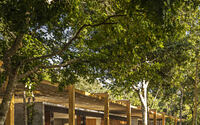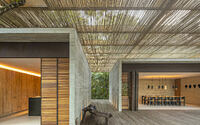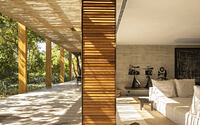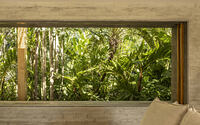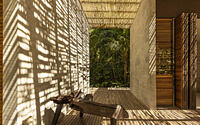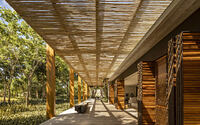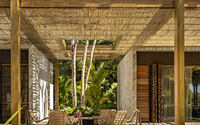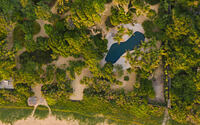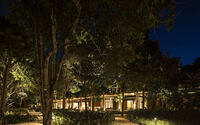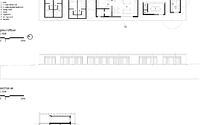Sand House by Studio Mk27
Sand House is a lovely concrete single-story house located close to the Pacific Ocean in Trancoso, Brazil. It has been designed in 2019 by Studio Mk27.


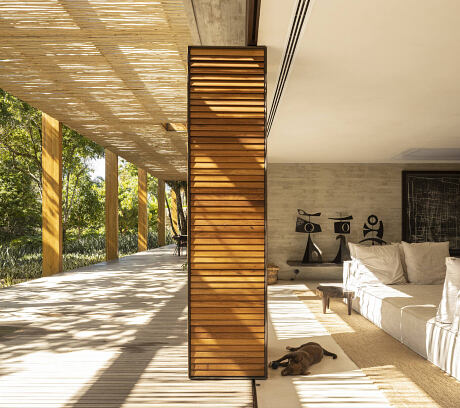

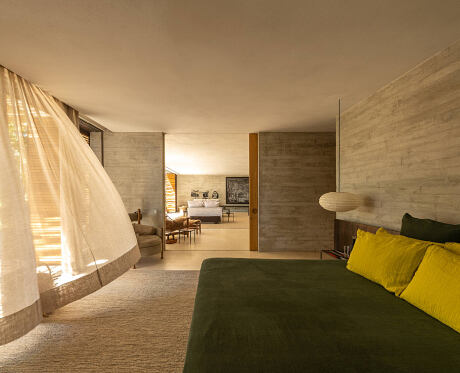
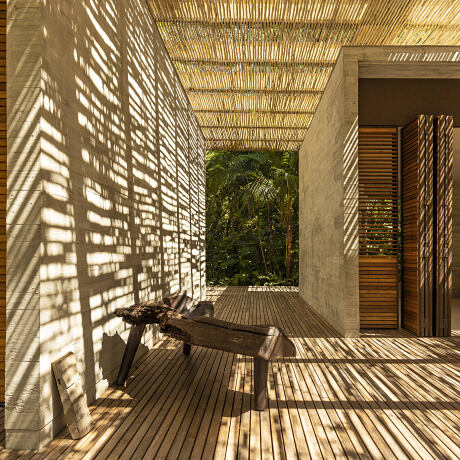

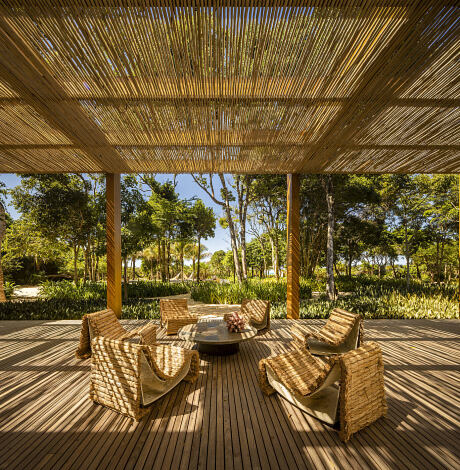
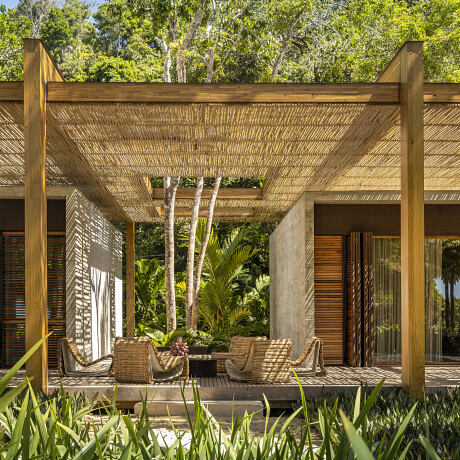
Description
There are limits, such as the ocean, that appear to our eyes and soul like boundless openings. When confronted with these powerful natural elements, architecture must also open itself and project towards the limit. The house on the Sand, with its extraordinary view to the Atlantic Ocean in the northeast of Brazil, undertakes this venture.
Immersed within the tropical woods that lead to the stunning beach of Itapororoca, the house expresses an authentic experimentation around the dissolution of architecture into its natural surroundings. The functional program is reduced to the bare minimum and the house lacks closed spaces that are not strictly necessary (corridors, entrance halls). Confined spaces are reduced to only the essential living areas that are condensed into five separate volumes, five capsules of life, each essentially committed to a single function: one for the kitchen, one for the dining room, one for the living room, the master bedroom and another for the guest bedrooms.
The volumes rest upon an elongated rectangular wooden deck, slightly raised above the ground, next to each other yet slightly detached. The entire structure is covered by a rustic eucalyptus pergola supported by 14 laminated wood frames. The rigor and logic of the modernist structure is broken by an important detail: the continuity of the twelve rectangular openings in the canopy is interrupted by several trees that are embraced by the deck, allowing the entrance of direct sunlight into the spaces. This contrast between rationality and transience reduces the gap between architecture and nature.
Life takes place inside the volumes and on the wooden deck, which becomes the connective tissue of the house, allowing for movement between spaces. The permeability of the covering makes the environmental situation highly ambiguous, transforming what might have been a common canopy into a sort of fundamental emotional gradient that harmonizes architecture with nature. Atmospheric agents, such as sunlight and rain, are filtered by the covering to create suggestive shadows that converse with the shades caused by the foliage of the numerous trees that surround the house and cover the entire lot all the way to the beach. Everywhere within the property’s spaces, one can feel immersed in a suspended atmosphere in which shadows and leaves split the sunrays creating a constant and poetic rain of shadows throughout the day.
The house is immersed in a green strip, although it may be fitting to say that the property itself is the green strip. The swimming pool, which is separate from the main structure and close to the beach, becomes part of the house. Its perimeter defined by curved lines reminiscent of natural ones, while its interior is marked by the parallel lines of two opposing inground staircases that move towards the center of the pool forming an almost rectangular area at its core. The pool is aligned longitudinally at 45 ° in relation to the main structure, opening a dynamic dialogue between pool, house and neighboring beach. The green canopied strip opens up near the pool, forming a suggestive clearing through which sunlight enters.
In Trancoso the house abandons any reference to the dwelling machine of the modernist evocation and offers itself as a sensorial machine in which nature, light, shadows and the constant and infinite sound of the ocean become the fundamental materials of the project.
Photography courtesy of Studio Mk27
Visit Studio Mk27
- by Matt Watts